#Emperor Rudolf ii
Explore tagged Tumblr posts
Text
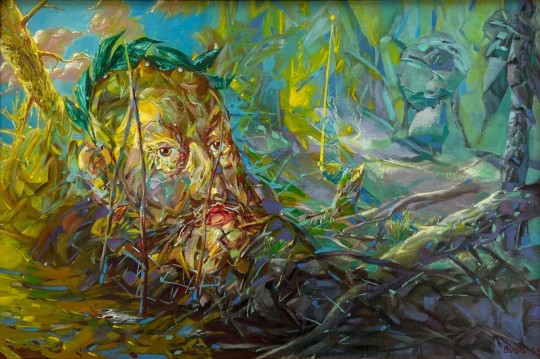
Bedřich Budil — Rudolf II of Habsburg (oil on canvas, 1985)
50 notes
·
View notes
Text

Rudolf II by Adolf Liebscher.
#adolf liebscher#heiliges römisches reich#¨haus habsburg#holy roman empire#holy roman emperor#house of habsburg#erzherzogtum österreich#königreich böhmen#imperator romanorum#České království#Czech Kingdom#Habsburkové#Habsburská dynastie#Rudolf II. Habsburský#římský císař
9 notes
·
View notes
Text
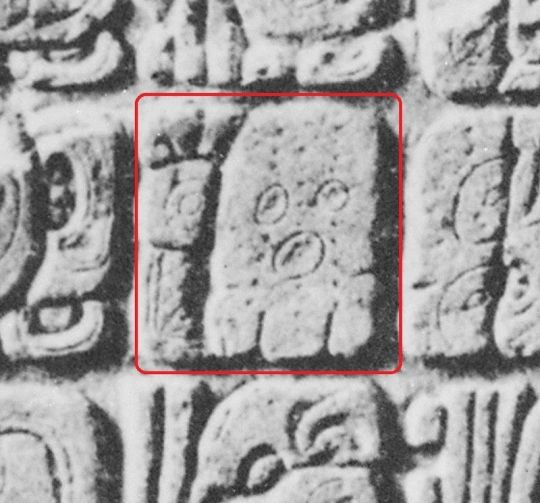
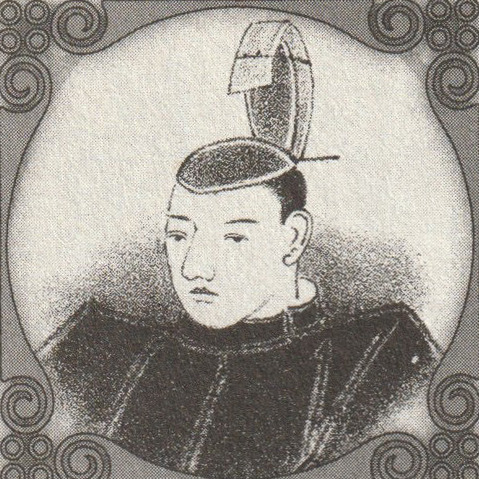



Royal Birthdays for Today, August 8th:
Casper, Maya Ruler, 422
Horikawa, Emperor of Japan, 1079
Rudolf II, Duke of Bavaria, 1306
Maria Alexandrovna, Empress of Russia, 1824
Beatrice of York, British Princess, 1988
#casper#emperor horikawa#rudolf ii#maria alexandrovna#princess beatrice#long live the queue#royal birthdays#Marie of Hesse
14 notes
·
View notes
Link
Rudolf II was Holy Roman Emperor (1576–1612), King of Hungary and Croatia, King of Bohemia (1575–1608/1611) and Archduke of Austria (1576–1608). He was a member...
Link: Rudolf II, Holy Roman Emperor
0 notes
Text
Book Review - ‘Alchemy’ by S.J. Parris
I really enjoyed this latest instalment in the Giordano Bruno series. I had to listen towards the end on double speed to finish it before my loan time expired, but that didn’t lessen my enjoyment of it. It’s weird because I sometimes put off starting some of the historical fiction I have set in the sixteenth century because I spend so much of my time there writing my own nonfiction books, but…

View On WordPress
#Alchemy#Book#Book Review#Francis Walsingham#Giordano Bruno#Holy Roman Emperor#John Dee#Prague#Review#Rudolf II#S J Parris#S.J. Parris#SJ Parris
0 notes
Photo
Very eccentric.
As befits a dude who would rather collect art and ponder alchemy than rule, but also very much not random.
Copies of the painting were distributed across Europe, this was a political statement, this was supposed to bolster grandeour and near divinity of emperorship.

First there is the theme of the painting - Vertumnus
Vertumnus is a Roman god. And well, in Rudolph's time, in age of rennaissance, there wasn't much else beside Greco-Roman mythology that would be available and also not decried as pure devilry by church. But still, we are talking about deity that oversaw birth of Rome herself, clear callback to the empire on which tradition Holy Roman Empire was founded (yes, Voltaire, I know, Voltaire, it was neither holy, nor Roman, and by 18th century not much of empire either...). Habsburgs as heirs of Ceasar and Octavianus.
More specificaly Vertumnus is a god of seasonal change. That means he has control over frost breaking to let rivers flow and fields be worked, over crop growing under abudance of light rain and bright sun, or withering in drought and hail, over new beginnings and sweet fruits rewarding year-long hard labour. It is him who grants you your sustenance, your very survival. It is him who makes and breaks order of life and world. Order on which you depend and which you must not question, lest he might use his power to turn your life upside down. Without him in place all would fall into disarray. When he is halted, when he is ailing, all of you are as well. Beside guardianship he also enacts change while remaining eternal himself, the ultimate alchemist of all material bellow and immaterial above. And some radical changes were definitely afoot.

Rudolph's were trying times.
Habsburgs were still surfing on high tide, greatest power in Europe and New World, with highest income, backing papacy (now that it's been tamed) and catholicism (except that time when Rudolph's father Maximilian flirted with conversion, to his wife's horror), acting a bit like policeman. But it was also a very precarious and taxing position.
On the outside Ottoman empire that spent last century and some trying to gobble up Medditeranean, flood Polish-Lithuanian commonwealth and break through Vienna gate to have free pass into German states, thus threatening European economic, religious and administrative core. On the inside religious wars between various christian denominations sprinkled with clashes against regional bodies which resisted centralization. And neighbouring kingdoms (especially France) eager to see Habsburgs taken down a peg.
All permeated with high expactations for the age of discoveries, be them unknown rich lands or emerging sciences twined with occult mysteries. Times in which educated and noble elite attempted to turn base metals into gold that would pay off their ever growing debts. Times in which John Dee hoped to learn from angels about secrets with which he could explain and alter cosmos.
To become master of natural forces, religious discourse and political stage who will fix the grand mess, stay afloat torrents of different court factions, defeat Turks, sort out squabling christians and become true global power from his cerebral position between earth and heaven must have been a very attractive image both to psych himself up and to present to the public. Aspirations so much loftier than eventual results of his reign. Melancholic affliction did not help.





Then we can take a look at various details of the painting.
It is nothing short of smorgasbord. From early spring onions and summer cherries to late autumn chestnuts, crowned by wheat sown as trees shed their leaves before winter and sprouting from soil as soon as snows melt away. From basic grain and cabbage that feeds all the peasants to the expensive fruits like pomegranates and figs brought in carts of merchants travelling from distant countries, or flowers to be found only in the gardens of the richest. Grape that is mother of wine that is blood of Christ. And fairly universal currency as well. Olives that are mother of oil. Also currency. And the most exotic items of them all - corn, pumpkin, cucumber, all discovered in New World.
All this belongs to the holy roman emperor, folks, this vast territory, this wealth, this beauty, this power to pluck and use and share whatever he wishes from the very edges of earth.






Also...
I can't be the only one who finds those cherries in place of his lips rather erotic. Wouldn't wish to fuck him (sorry, Dolph), but those cherry lips sure are very suggestive. He was a hoe and he's got syphilis to prove it too.


Giuseppe Arcimboldo. Imperatore Rodolfo II d'Asburgo come Vertumno Giuseppe Arcimboldo. Rudolph II of Habsburg as Vertumnus Джузеппе Арчимбольдо. Портрет императора Рудольфа II в образе Вертумна 1590
god
#austro-hungarian empire#habsburgs#16th century#early modern#rudolf ii habsburg#vertumnus#art#mannerism#painting#portrait#roman mythology#rennaissance#veggie emperor
5 notes
·
View notes
Text


On this day:
VOYNICH MANUSCRIPT: MOST MYSTERIOUS MANUSCRIPT IN THE WORLD
On August 19, 1666, the rector of Prague University sent a letter and a manuscript to one of his former students, the Jesuit scholar Athanasius Kircher. The manuscript had lain forgotten in the monastery library in Frascati, Italy, for 250 years. It was obtained by Wilfred Voynich in 1912 and went on to be dubbed "the Most Mysterious Manuscript in the World."
Christened the Voynich, the six-by-nine-inch parchment codex appears to be a straightforward book. It is, however, over two hundred pages written in a code or unknown language that has never been deciphered. The text is elaborately illustrated with colored drawings of unknown plants and the sun, moon, and stars. Depictions of tiny naked women also frolic over the pages.
First appearing in history in 1586, the book was purchased for a then-outrageous sum of 600 ducats by the Holy Roman emperor, Rudolf II of Bohemia. One of the most eccentric European monarchs of the era, Rudolf collected dwarfs, had a regiment of giants in his army, and entertained all manner of magicians and alchemists. It has been suggested that the Voynich manuscript is the work of Roger Bacon, a famous English monk and scientist, and that it made its way to Prague via John Dee, a famous occultist of the time.
From dating of the vellum, pigments, calligraphy, and drawings, the manuscript is judged to be from the late thirteenth century. It has been labeled as everything from an illustrated herbal, to an alchemical treatise written in code to protect the contents, to an elaborate hoax. Its contents are roughly thought to be divided into sections of astronomy/astrology, biology, cosmology, pharmaceuticals, and recipes. After Voynich's widow died, the manuscript was sold to a book dealer and then donated to Yale University.
Text from: Almanac of the Infamous, the Incredible, and the Ignored by Juanita Rose Violins, published by Weiser Books, 2009
128 notes
·
View notes
Photo

Glaive of Emperor Rudolf II (reigned 1576–1612). dated 1577. Credit line: Gift of George D. Pratt, 1925 https://www.metmuseum.org/art/collection/search/22899
#aesthetic#art#abstract art#art museum#art history#The Metropolitan Museum of Art#museum#museum photography#museum aesthetic#dark academia
32 notes
·
View notes
Photo






HOUSE OF THE DRAGON + art (11/∞)
Emperor Rudolf II in Armour | Martino Rota De Koning van Thule | Pierre Jean van der Ouderaa Portrait of a Man in Armour with Red Scarf | Anthony van Dyck
#houseofthedragonedit#gameofthronesdaily#house of the dragon#otto hightower#daemon targaryen#hotd#hotdedit#art#painting#martino rota#pierre jean van der ouderaa#anthony can dyck#hotdart#*
180 notes
·
View notes
Text

Hans Hoffmann - A Hare in the Forest, c. 1585 oil on panel, 62,2 x 78,4 cm Getty Center
Nibbling on a leaf pulled from a stalk of Lady's Mantle, an alert hare sits at the edge of a pine forest. Unlike the darkness one would expect to find in a forest, Hans Hoffmann painted a theatrically illuminated scene. Each plant and insect--snail, cricket, beetle--is seen in vivid detail. The finely wrought leaves of the thistle, the sprawling fronds of a plantain, and the bright blue flowers of the Hare Bell attest to Hoffmann's meticulous treatment of the subject. In fact, none of these plants could have coexisted in the natural world. Hoffmann imaginatively combined numerous individual nature studies in a single painting.
Hoffmann's golden-brown hare is based on Albrecht Dürer's famous and influential watercolor which, much like his Stag Beetle, shows a hare against a plain ground. Hoffmann had seen Dürer's hare while in Nuremburg. Later, when he went to work in the court of Emperor Rudolf II, he helped the Emperor acquire the watercolor for his Kunstkammer. Hoffmann's hare differs from Dürer's, however, appearing amid a striking arrangement of elegant plants and insects. At the time it was painted, this arrangement of nearly life-size subjects was entirely unique, not only within Hoffmann's body of work, but also within the tradition of German nature study.
22 notes
·
View notes
Text

Maximilian II (1527-1576) and His Wife Maria of Spain (1528-1603) and His Children Anna (1549-1580), Rudolf (1552-1612) and Ernst (1553-1595)
Artist: Giuseppe Arcimboldo (Italian, 1526-1593)
Date: c. 1563
Medium: Oil painting
Collection: Kunsthistorisches Museum Vienna, Austria
Description
Maximilian (1527-1576) was the eldest son of emperor Ferdinand I. and Anna of Hungary. In 1548 he married his cousin Maria. Her father Karl V made him governor of Spain. He inherited Bohemia, Hungary and the Austrian countries. In 1564 he was crowned Roman Emperor. Maximilian is shown together with his wife Maria of Spain (1528 - 1603) and his children Anna (1549 - 1580), Rudolf (1552 - 1612) and in the cradle Ernst (1553 -1595).
It is quite clear that the painter Arcimboldo settled down in Vienna in 1563. If the attribution to Arcimboldo rightly exists, he worked with models. According to technical research the painter used a kind of templates. Moreover there are single portraits of Maria, Anna and Maximilian II left.
#painting#portrait#family#maximilian ii#maria of spain#interior#man#woman#children#baby#standing#full length#costume#sword#handkerchief#drapery#classic pillar#family portrait#artwork#oil painting#giuseppe archimboldo#italian painter#italian art#16th century painting#spanish nobility#holy roman emperor#emperor rudolph ii#archduke ernst
22 notes
·
View notes
Text

Portrait of Rudolf II. Unknown artist.
#haus habsburg#kaiser rudolf ii.#heiliges römisches reich#holy roman empire#holy roman emperor#erzherzogtum österreich#königreich Böhmen#České království#Regnum Bohemiae#house of habsburg#art#portrait#Český král#magyar királyság#rudolf ii#king of bohemia
1 note
·
View note
Text

Giuseppe Arcimboldo (Italian, 1527–1593) • Emperor Rudolf II as Vertumnus, the Roman God of the Seasons • c. 1590
#still life#art#painting#art history#fine art#artist#giuseppe arcimboldo#renaissance art#oil painting#italian artist#italian painter#art of the still life blog#art blogs on tumblr#art lovers on tumblr#artwork#16th century art
61 notes
·
View notes
Text
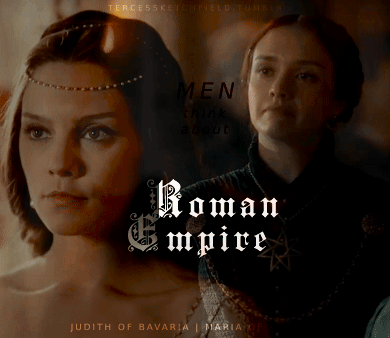
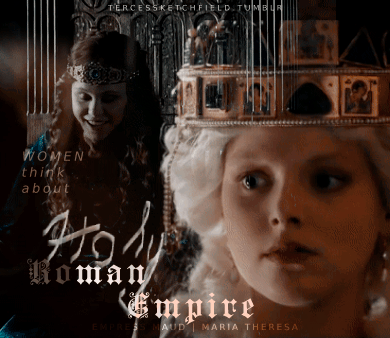
MEN THINK ABOUT ROMAN EMPIRE. WOMEN THINK ABOUT HOLY ROMAN EMPIRE
JUDITH OF BAVARIA (797-843) — Daughter of Count Welf I of Bavaria, Judith was a Carolingian Empress as the second wife of Louis I the Pious. Mother of Gisela and Charles the Bald, she foght for both her own influence at court and for the succession of her son over the claims of his elder half-brothers, the sons of Louis I from his first marriage. Charles became the Emperor in 875, after the death of Louis II, his nephew and a son of his half-brother Lothair / fancast: Annabel Scholey
MARIA OF AUSTRIA (1528-1603) — Daughter of Charles V, Holy Roman Emperor, and Isabella of Portugal. She served as Regent of Spain both jointly with her husband, Maximilian (before their accession to the imperial throne), and in person, for her father, and brother, Philip II. Her children include two Holy Roman Emperors, Rudolf II and Matthias, over whom she held great influence, and queens consorts of Spain, and France / fancast: Olivia Cooke
EMPRESS MAUD (1102-1167) — Daughter of Henry I of England and Matilda of Scotland. Her first marriage to the Holy Roman Emperor, Henry V, gave her the title under which she came down into history, and was a source of great pride to Maud. Rightful heiress of Henry I, she confronted her cousin, King Stephen, in the civil war, known as the Anarchy, fighting ferociously for her rights. She failed in this for herself but won for her son Henry, who became king and established the Plantagenet dynasty in England / cast: Alison Pill in The Pillars of the Earth (2010)
MARIA THERESA (1717-1780) — She succeded her father Charles VI as the ruler of Habsburg monarchy in 1740, and devoutedly defended it against its enemies in the War of Austrian Succession and the Seven Year's War. Wife of the Holy Roman Emperor, Francis I, she was a forceful personality and a competent ruler herself, reigning first in her own right, and later, jointly with her son Empreror Joseph II. Her children include two Holy Romam Emperors (Joseph II and Leopold II), queens consorts of Naples ans Sicily, and France / cast: Marie-Luise Stockinger in Maria Theresia (2017)
#historyedit#judith of bavaria#maria of austria#empress maud#empress matilda#maria theresa#maria theresia#perioddramaedit#history#women in history#perioddramasource#onlyperioddramas#tusereliza#userbennet#usermina#weloveperioddrama#cortegiania#perioddramagif#gifshistorical#my edit#*i have literally zero idea what is this lmao* but i really like it idk
143 notes
·
View notes
Text
Master Post - A to M
If you notice any show, movie or character missing that I’ve made gifs of, please let me know. Characters are sorted alphabetically by first their last name and then their first name.
Last updated: April 12th, 2025
A
Aladdin [2019] (Princess Jasmine)
Allerleirauh (Princess Friederike | Princess Lotte)
American Song Contest (2022)
Aschenputtel [2010] (Marie/Aschenputtel)
Aschenputtel [2011] (Annabella | Aschenputtel/Cinderella)
Australia [2008] (Sarah Ashley)
B
Barbie (Stereotypical Barbie)
Beauty and the Beast [2017] (Madame de Garderobe | Mrs Potts)
Becoming Elizabeth (Amy Robsart | Mary Tudor)
Blood, Sex & Royalty (Anne Boleyn | Mary Boleyn)
Bridgerton (Tilley Arnold | Lady Berbrooke | Benedict Bridgerton | Daphne Bridgerton | Eloise Bridgerton | Francesca Bridgerton | Hyacinth Bridgerton | Violet Bridgerton | Queen Charlotte | Cressida Cowper | Agatha Danbury | Penelope Featherington | Philippa Featherington | Prudence Featherington | King George III | Siena Rosso | Edwina Sharma | Kathani "Kate" Sharma | Mary Sharma | Tessa | Marina Thompson | Extras)
Britain’s Bloody Crown (Margaret of Anjou | Margaret Beaufort | Elizabeth Woodville)
C
Cinderella [2015] (Anastasia Tremaine | Drisella Tremaine | Ella)
Corsage (Elisabeth “Sisi” of Austria)
D
Das Adlon (Sonja Schadt)
Death on the Nile [2022] (Jacqueline de Belleforte | Linnet Ridgeway-Doyle)
Die Galoschen des Glücks (Princess Aurora)
Die Kaiserin (Charlotte of Belgium | Maria Alexandrovna / Marie of Hesse | Elisabeth “Sisi” of Austria | Archduchess Sophie of Austria)
Die Salzprinzessin (Princess Amélie | Princess Eugenia | Princess Isabella)
Die Schöne und das Biest (Elsa)
Disney Live Action (see the individual movies | Extras)
Doctor Who (Ashildr | Cyril Arwell | Lily Arwell | Madge Arwell | Reg Arwell | Rosanna Calvierri | Miss Chandrakala | Agatha Christie | Hugh Curbishley | The Doctor | Twelth Doctor | Clemency Eddison | Jack Harkness | King James I | Katherine | Donna Noble | Madame de Pompadour | Amy Pond | Bill Potts | Robina Redmond | Becka Savage | Willa Twiston | Extras)
Domina (Agrippa | Antonia Major | Antonia “Antonina” Minor | Emperor Augustus | Julia the Elder | Livia Drusilla | Marcella | Octavia Minor)
Downton Abbey (Lucy Branson (née Smith) | Cora Crawley | Edith Crawley | Mary Crawley)
Dune: Prophecy (Natalya Arat Corrino | Ynez Corrino)
Dynasty [2017] (Kirby Anders | Fallon Carrington)
E
Effie Gray [2014] (Euphemia “Effie” Gray)
Elizabeth Duology (Elizabeth I)
Emerald City (Langwidere of Ev)
Emma [2020] (Isabella Knightley | Emma Woodhouse)
Eurovision Song Contest (1970 | 1974 | 1979 | 1980 | 1982 | 1988 | 1991 | 1992 | 1993 | 1995 | 1996 | 1998 | 2003 | 2004 | 2005 | 2006 | 2007 | 2008 | 2009 | 2010 | 2011 | 2012 | 2013 | 2014 | 2015 | 2016 | 2017 | 2018 | 2019 | 2021 | 2022 | 2023 | 2024)
F
Frauen, die Geschichte machten (Catherine the Great)
G
Galavant (Madalena)
Game of Thrones (Myrcella Baratheon | Cersei Lannister | Ellaria Sand | Sansa Stark | Daenerys Targaryen | Margaery Tyrell)
Good Omens (Aziraphale | Crowley)
Grey’s Anatomy (Lexie Grey | Izzie Stevens)
H
Hamilton (Angelica Schuyler | Eliza Schuyler Hamilton)
High School Musical incl. Sharpay’s Fabulous Adventure (Sharpay Evans)
House of the Dragon (Jeyne Arryn | Alicent Hightower | Mysaria of Lys | Aegon II Targaryen | Baela Targaryen | Helaena Targaryen | Rhaena Targaryen | Rhaenyra Targaryen | Rhaenys Targaryen | Laena Velaryon)
I
J
K
Kronprinz Rudolf [2006] (Elisabeth “Sisi” of Austria)
Ku’damm (Helga von Boost)
L
Legacies (Jo Laughlin | Hope Mikaelson | Elizabeth “Lizzie” Saltzman | Josette “Josie” Saltzman)
Legend of the Seeker (Jennsen Rahl)
Les Misérables [2018] (Cosette | Fantine Thibault)
Little Women [2019] (Amy March | Margaret “Meg” March)
Live Performances (Jennie Kim | Victoria Monét | Alexandra Rotan)
Ludwig [1973] (Elisabeth “Sisi” of Austria)
Ludwig II [2012] (Elisabeth “Sisi” of Austria | Ludovika, The Duchess in Bavaria | Sophie in Bavaria)
M
Maleficent Duology (Princess Aurora | Queen Ingrith of Ulstead)
Märchenperlen (see the individual movies)
Maria Theresia [2017] (Maria Anna of Austria | Empress Maria Theresia | Mademoiselle de Chartres | Elisa Fritz)
Marie Antoinette [2006] (Jeanne du Barry | Marie Antoinette | Empress Maria Theresia | Marie Thérèse Louise of Savoy, Princesse de Lamballe | Extras)
Marie Antoinette [2022] (Marie Antoinette)
Mary Queen of Scots [2013] (Mary Stuart)
Maximilian - Das Spiel von Macht und Liebe / Maximilian and Marie de Burgogne (Maximilian of Austria | Mary of Burgundy | Bishop de Clugny | Johanna von Hallewyn | Rosina von Kraig | Georg Rudolfer | Margaret of York)
Merlin (Morgana Pendragon)
My Fair Lady (Eliza Doolittle)
My Lady Jane (Jane Grey | Mary Tudor | Petunia)
Go to N-Z
19 notes
·
View notes
Text
You might assume that sentences like "Majesty was infinitely kind - witty, stimulating, interesting and possible. I was deeply moved when I was able to kiss his hand and thank him for so much favour. His face had such a good, almost soft expression. I am pleased to give him pleasure." and "I belonged to [him] before with body and soul; but this time he has conquered me completely" would come from like, Mary's writings about Rudolf or whatever. but in fact it's future german chancellor bernhard von bülow writing about emperor wilhelm ii

20 notes
·
View notes